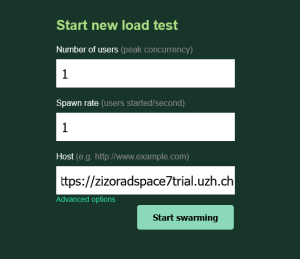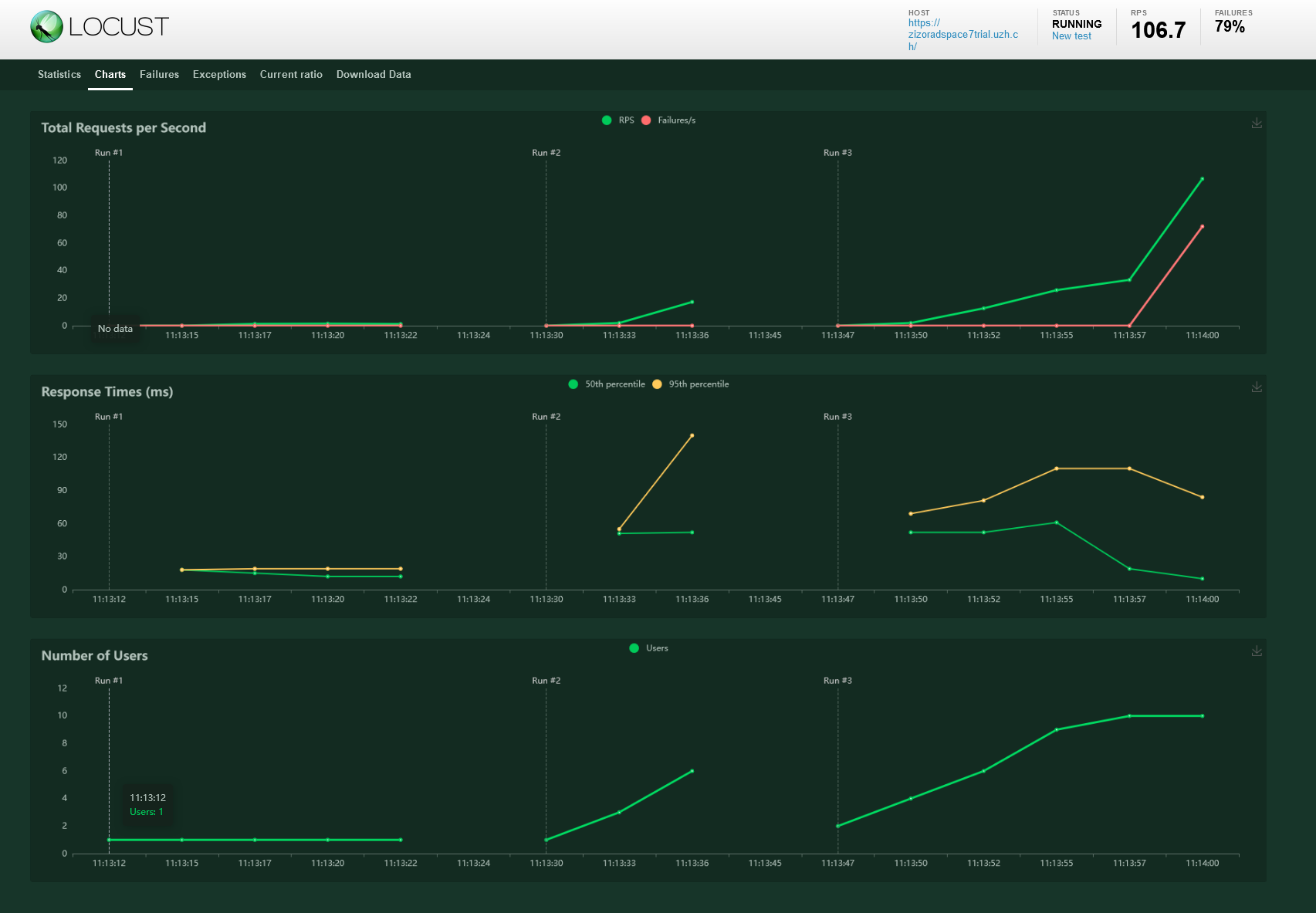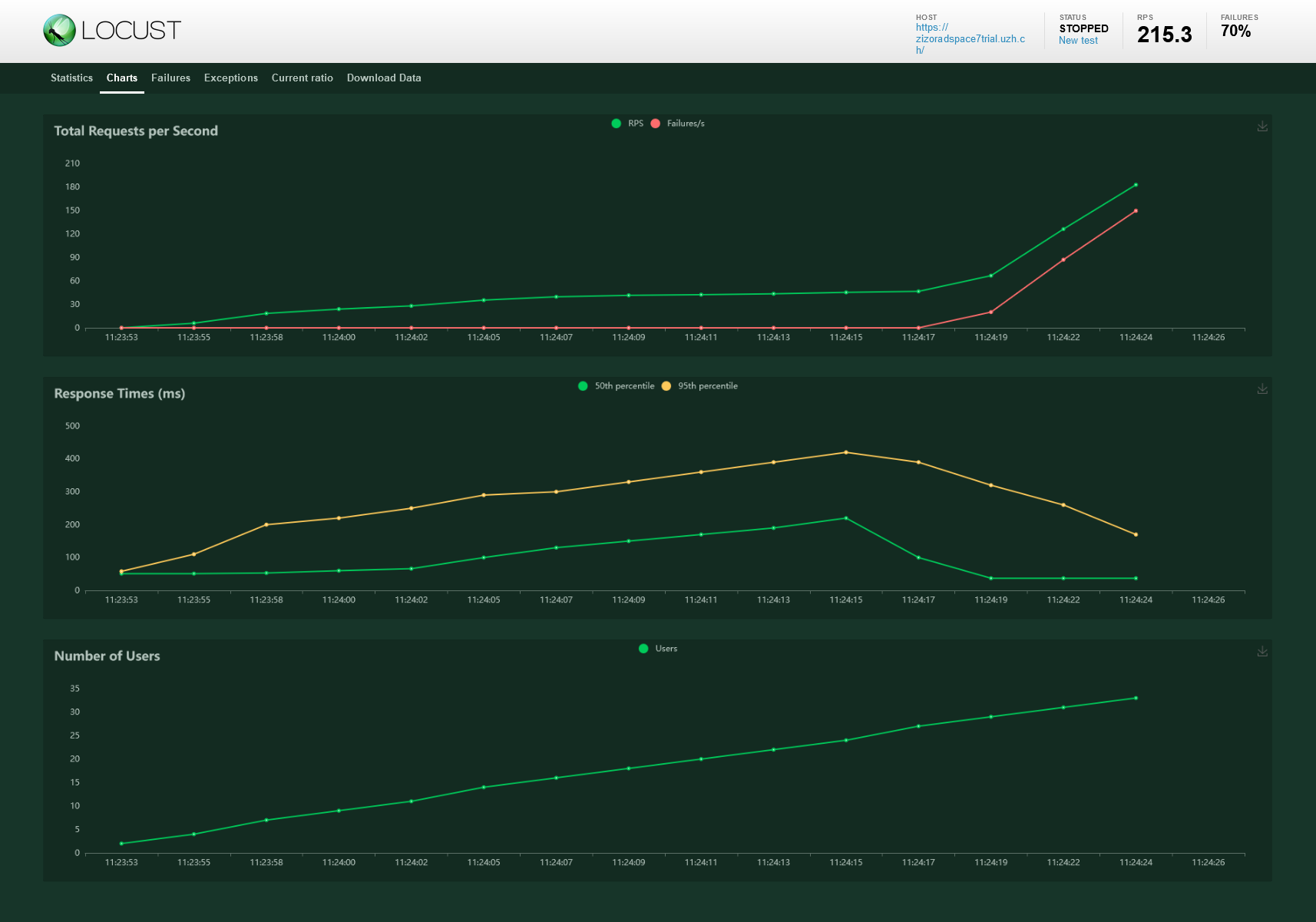Contribute to the DSpace Development Fund
The newly established DSpace Development Fund supports the development of new features prioritized by DSpace Governance. For a list of planned features see the fund wiki page.
(Experiences from the University of Zurich, IT, ZORA Repository:)
To test the performance of our services (Eprints, DSpace, ...) we recommend the open source load testing tool Locust - https://locust.io
We want to test the multiple and parallel download of static and dynamic pages, the upload, various workflow steps and multiple user logins.
As I have not found any example configurations for DSpace, here is a short guide.
Installation
Instructions according to https://docs.locust.io/en/stable/installation.html
Lokal (Win, Linux, Mac) vs. RHEL8 Server; both installed and tested. I prefer a ServerSide installation, because bigger hardware and therefore more pressure during load tests.
python 3.11
gcc-c++
pip3.11
open Port 8089
locust install: pip3.11 install locust
01 Simple scenarios ("Hello World" mode)
Configuration
Simply pass through the URL entered at the start in the input form ("Number of Users", "Spawn rate", "Host") and test it - e.g. test the homepage of your DS7 repo
vi locustfile.py
|
more on configs read https://docs.locust.io/en/stable/writing-a-locustfile.html#writing-a-locustfile
Start Locust
read Command Line Options
Attention: Standard http vs. https; Certs and Keys
[2024-01-31 14:40:56,153] INFO/locust.main: Starting web interface at https://0.0.0.0:8089 [2024-01-31 14:40:56,166] INFO/locust.main: Starting Locust 2.20.1 |
UI
call Browser https://SERVERNAME:8089/ and start loadtests. First easy with 1 user:
(Attention: use trailing slash at the end of 'HOST'!)
See charts, failures, statistics and many more...
02 Real  test scenarios (static & dynamic content)
test scenarios (static & dynamic content)
Homepage
SubPage Communities
Search
Login Process incl. Token Autentication
and these scenarios according to the storybook in locustfile.py with
1 user
10 parallel users
nnn parallel users
Preliminary work / tests
Before the various authentication procedures for login, session handling (credentials, tokens, cookies, etc.) and workflow steps (dashboard, upload, metadata edit) are run through with try & error, it is advisable to test the individual work steps via the APIs beforehand using CURL.
For e.g. Before login ba POST method, receive TOKEN via GET. Read (insert Link)
Configuration (“complex” Mode)
vi locustfile.py
|
Notes
- 2 types of users (anonymous, registered user), login with token handling
- further, sequential storybook possible: login, workflow, upload, edit metadata, logout
Grafic Output (10 User)
Grafic Output (100 User)
Error rate increases as soon as system is overloaded
03 Really hard test scenarios: Recording workflow steps in FireFox to generate script for Locust
Creating a Locust configuration file from scratch is sometimes difficult, especially when complex workflows and work steps need to be analysed.
One solution is to record typical work steps in the browser and save them in HAR format (https://en.wikipedia.org/wiki/HAR_(file_format)). This, in turn, can be created with the tool har2locust (https://github.com/SvenskaSpel/har2locust) into locustfile.py configuration files and an analysis as described above is ready to go.
The procedure:
- read the notes on https://github.com/SvenskaSpel/har2locust
- [locust]$ pip3.11 install har2locust
Record FF session:
- Open DS7 page in browser
- Menu / Tools for developers | right mouse button + Examine
- Network analysis tab, click on trash basket symbol (delete) - from then on the recording of the activities runs
- Execute DS7 actions (Login, MyDSpace, ... Logout)
- In the end goto column "File", click right mouse button, "Save as Har-File" and save the recording
- sftp Har-File => SERVER
- [locust]$ har2locust x1.har > locustfile.py
- [locust]$ locust --tls-cert /etc/pki/tls/certs/SERVERNAME/cert.pem --tls-key /etc/pki/tls/certs/SERVERNAME/privkey.pem
Links
- https://locust.io/
- https://docs.locust.io/en/stable/
- https://docs.locust.io/en/stable/writing-a-locustfile.html#writing-a-locustfile
- https://medium.com/dana-engineering/load-testing-at-web-application-api-using-locust-2b297c5771ab
- https://www.blazemeter.com/blog/locust-python






